Abstract
1. The anticholinergic drug N-ethyl-2-pyrrolidylmethylcyclopentylphenyl glycollate (PMCG) has been studied for its effects on the contraction of fast-twitch (flexor hallucis longus, FHL) and slow-twitch (soleus) muscles in the cat.
2. In both muscles lower doses (0·25 to 10 mg intra-arterially) potentiated and higher doses (10 mg and above) depressed twitches produced by indirect stimulation. Similar effects were obtained in directly stimulated muscles.
3. The effects of the drug on muscles stimulated repetitively were dependent on both dose and frequency of stimulation. Doses which potentiated twitches also potentiated low frequency tetani (5-30 Hz for soleus; 10-50 Hz for FHL). There was a depression and non-maintenance of higher frequency tetani (80 Hz and above for soleus; 150 Hz and above for FHL).
4. Both atropine and caramiphen had similar dose dependent potentiating and depressant actions. Hyoscine acted similarly in some cats; in others it had only a depressant action.
5. It is suggested that the potentiating actions of PMCG, caramiphen, atropine and hyoscine are due to a direct musculotropic action. The depressant actions resulting from higher doses are due, in part, to a curare-like action and in part to a direct action on the muscle fibres.
Full text
PDF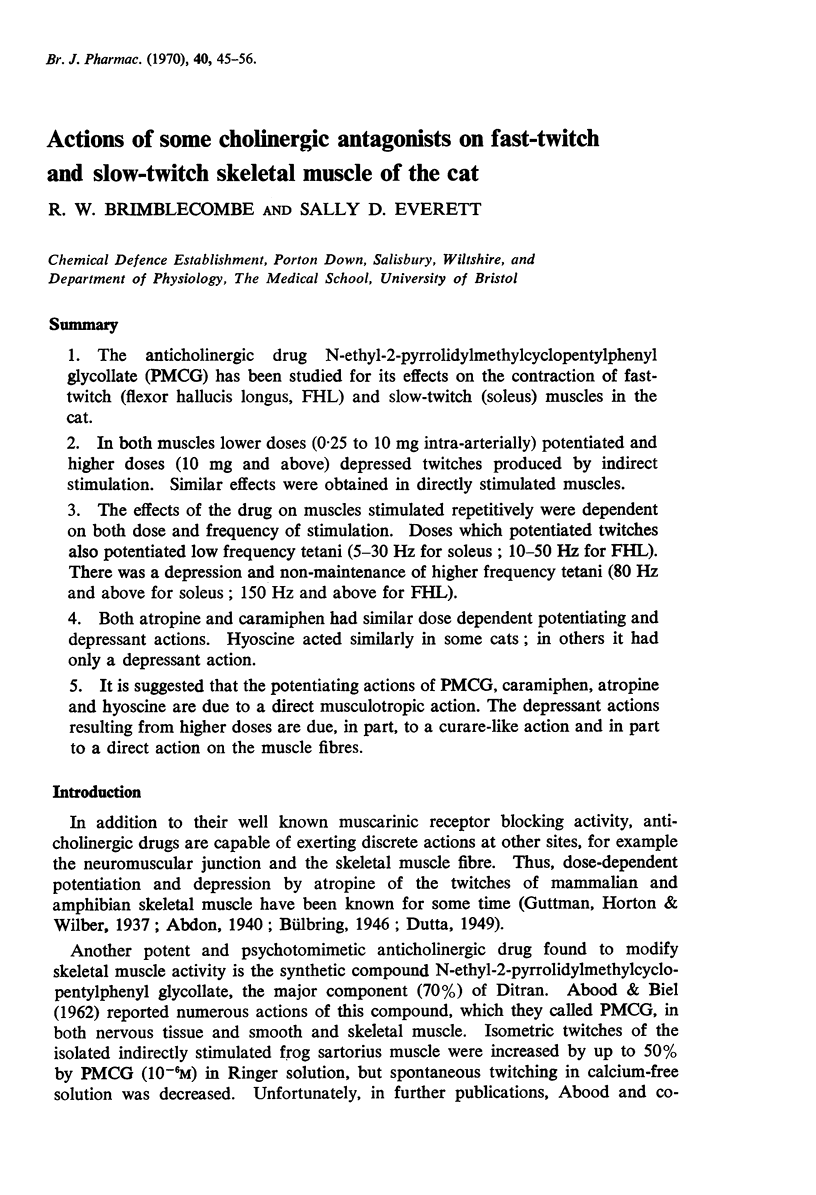
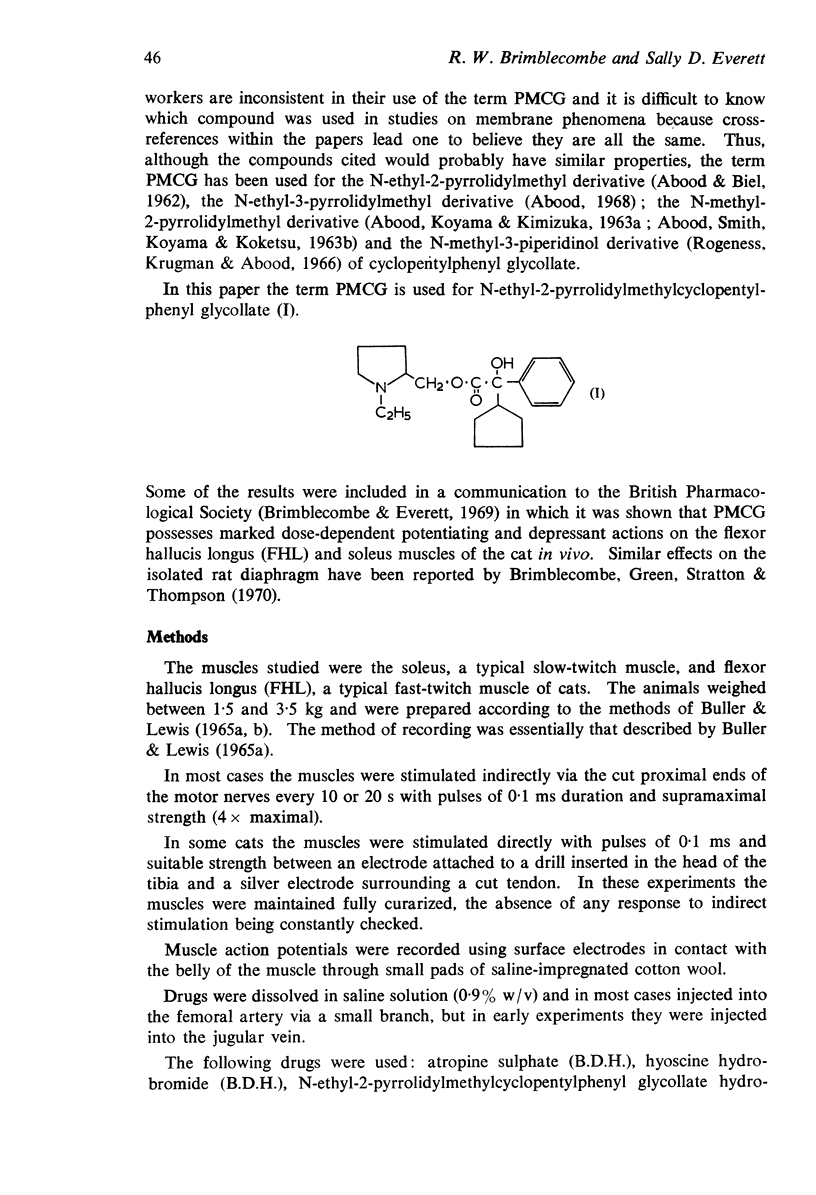
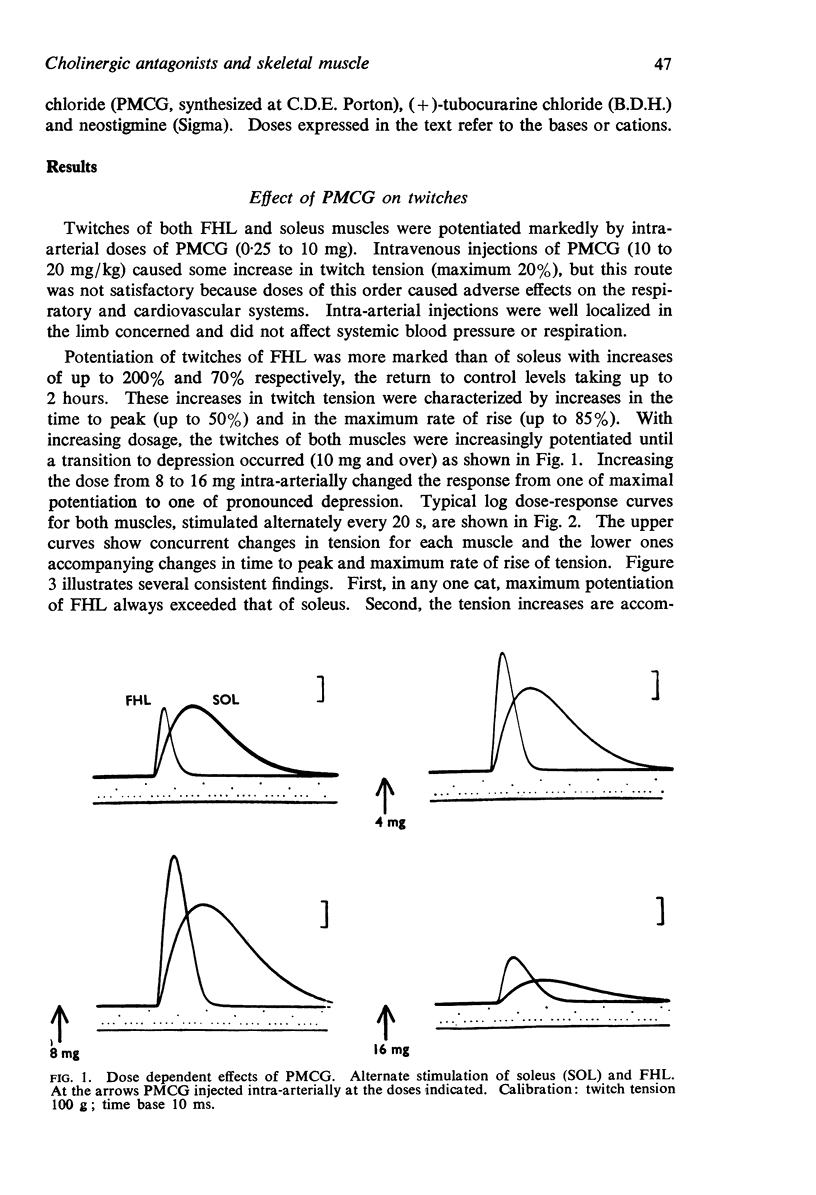
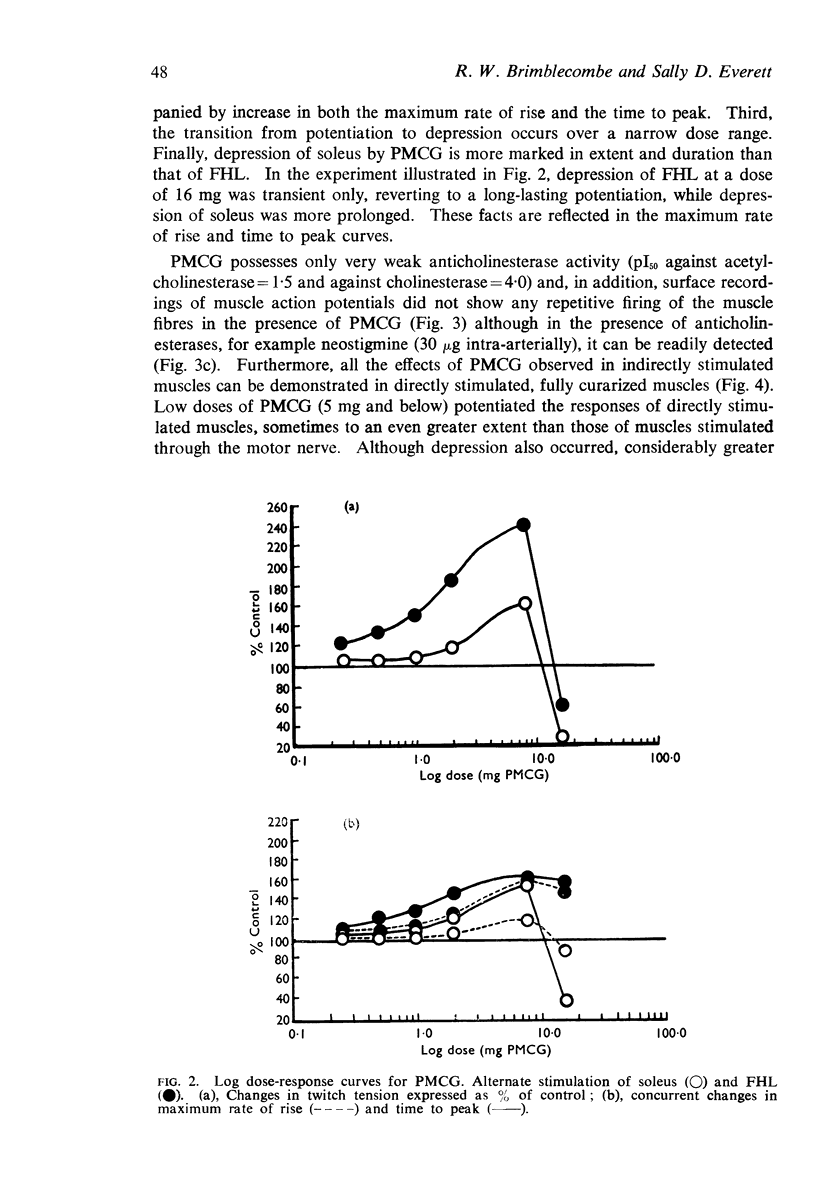
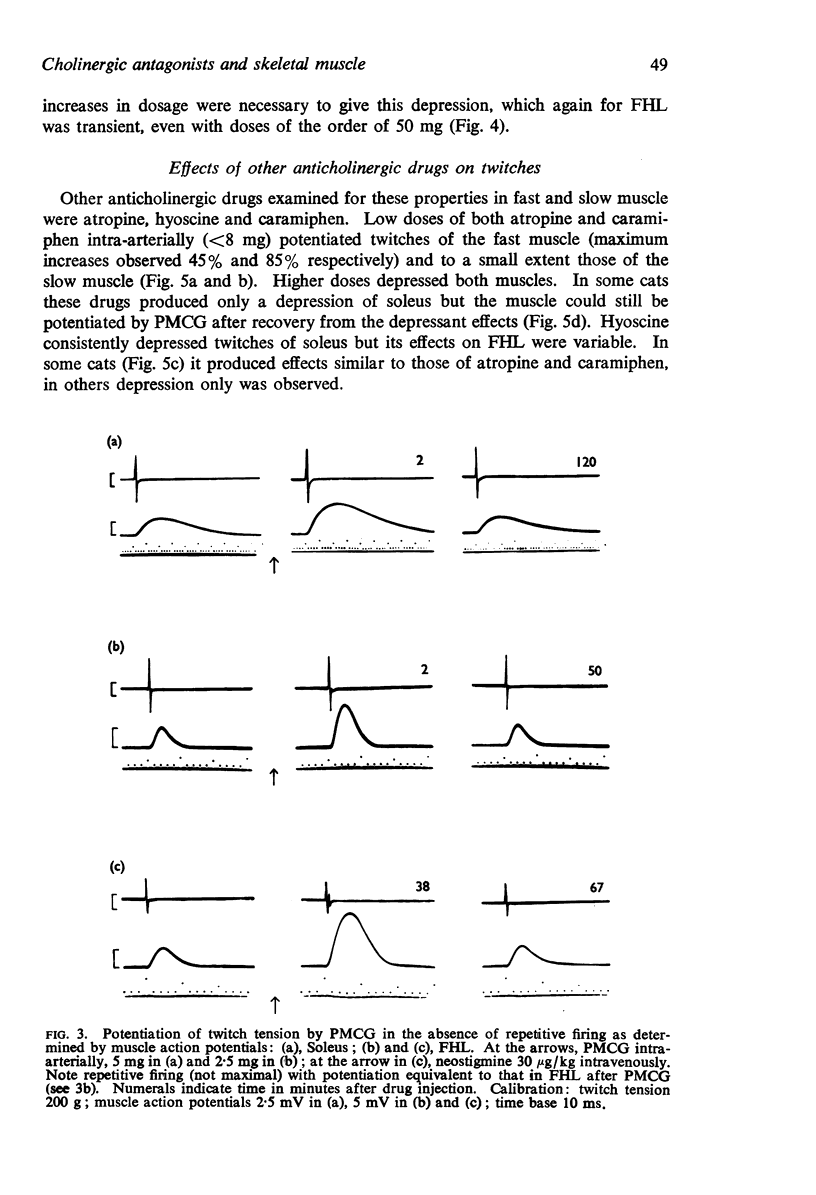
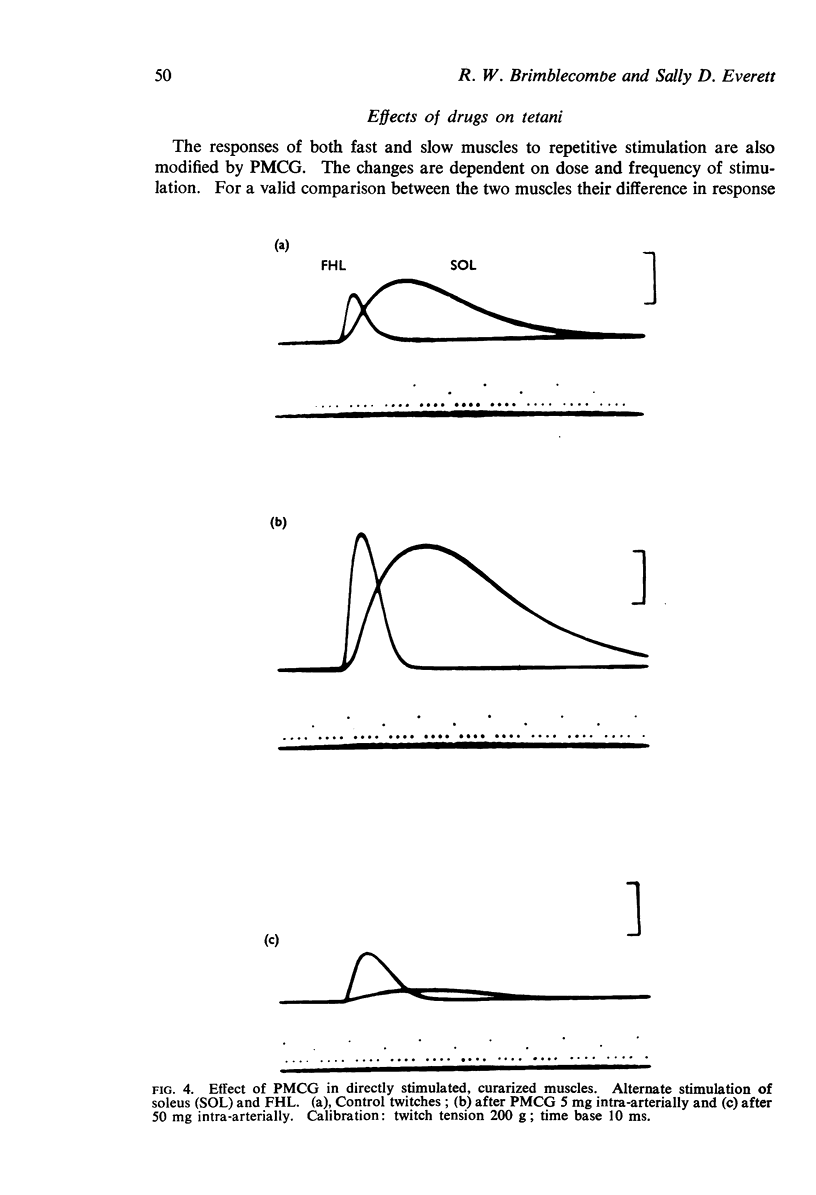
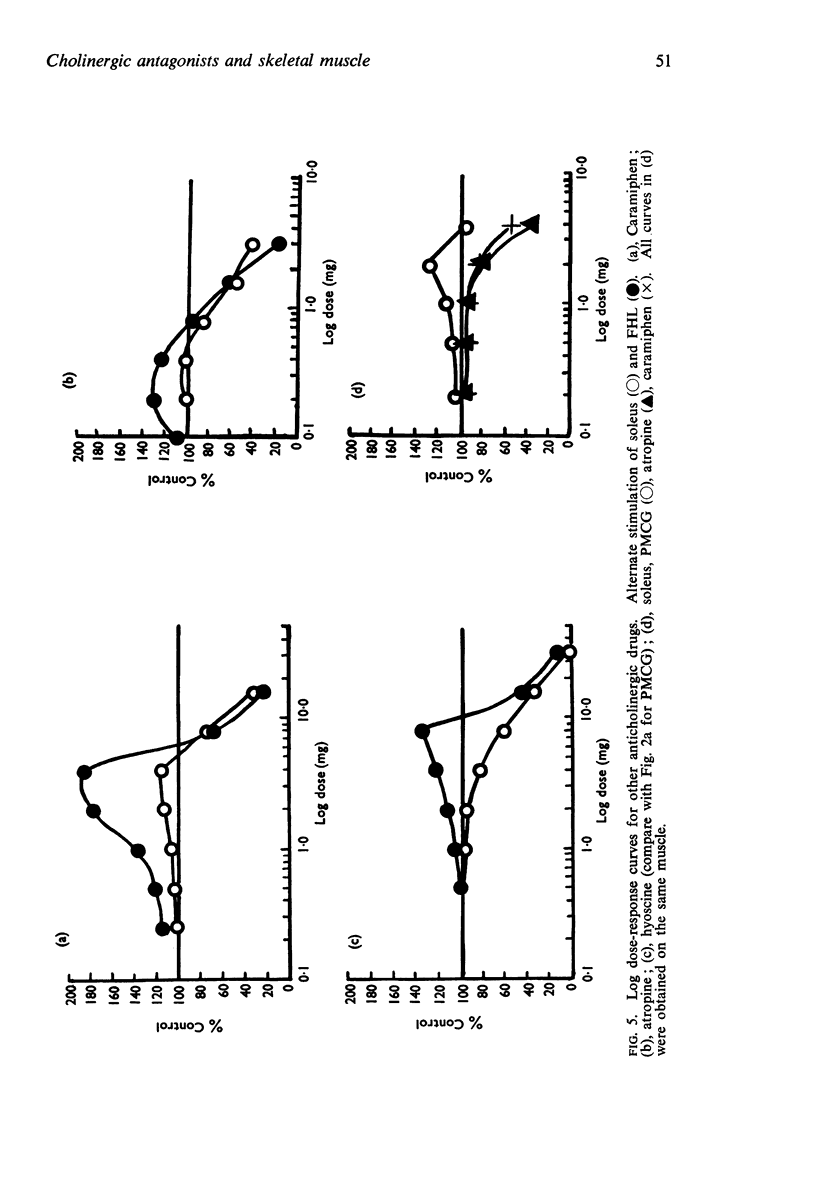
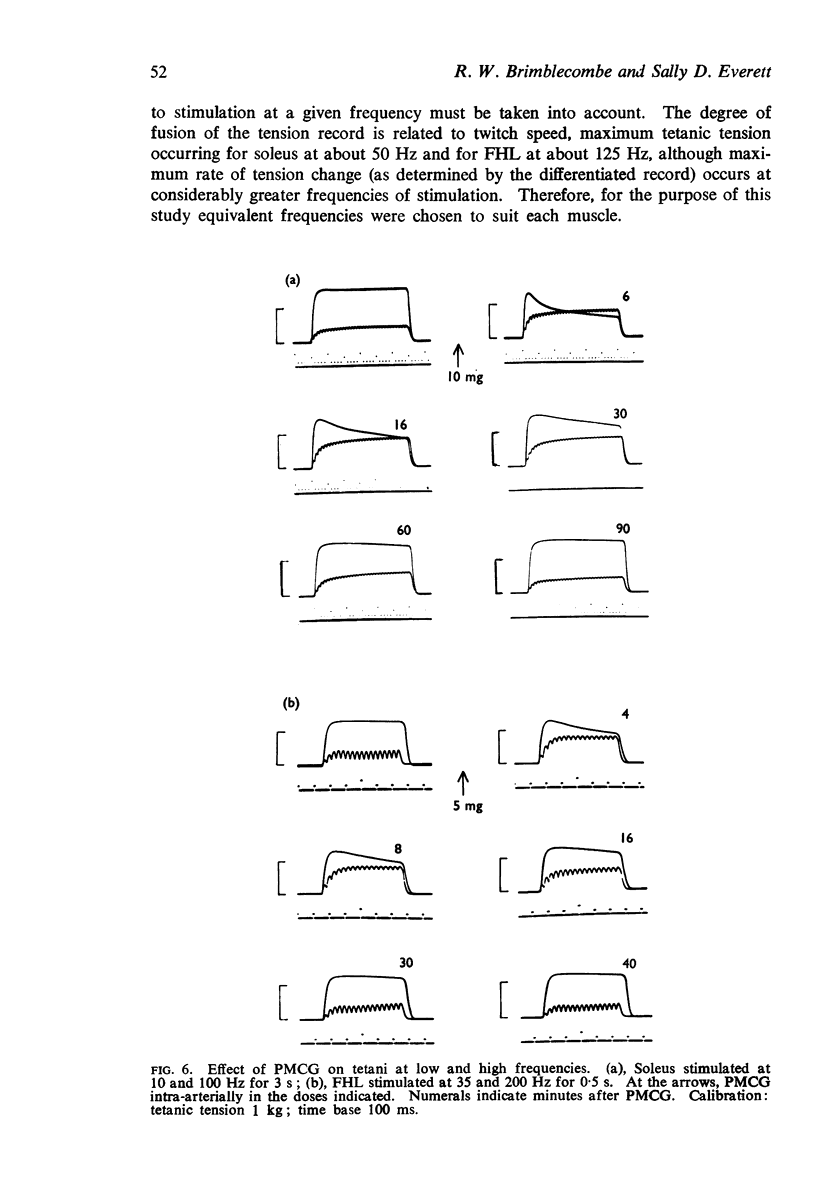
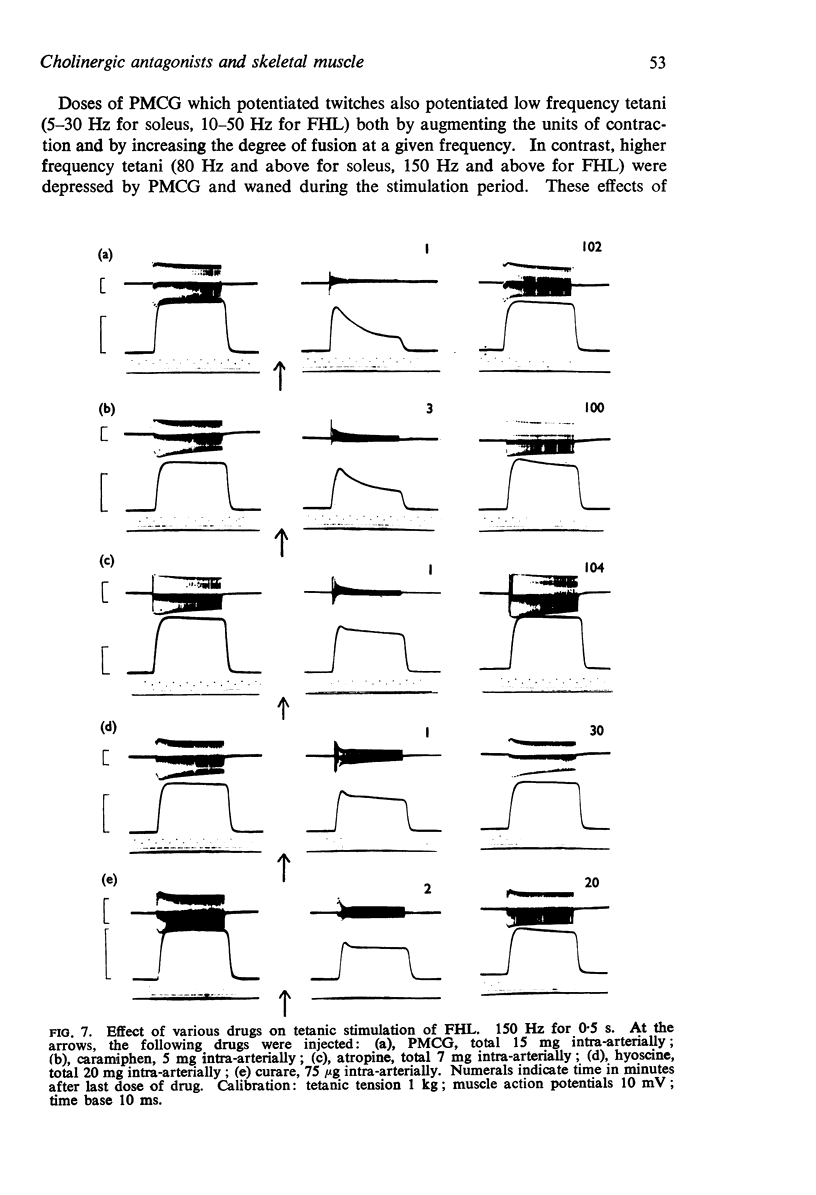
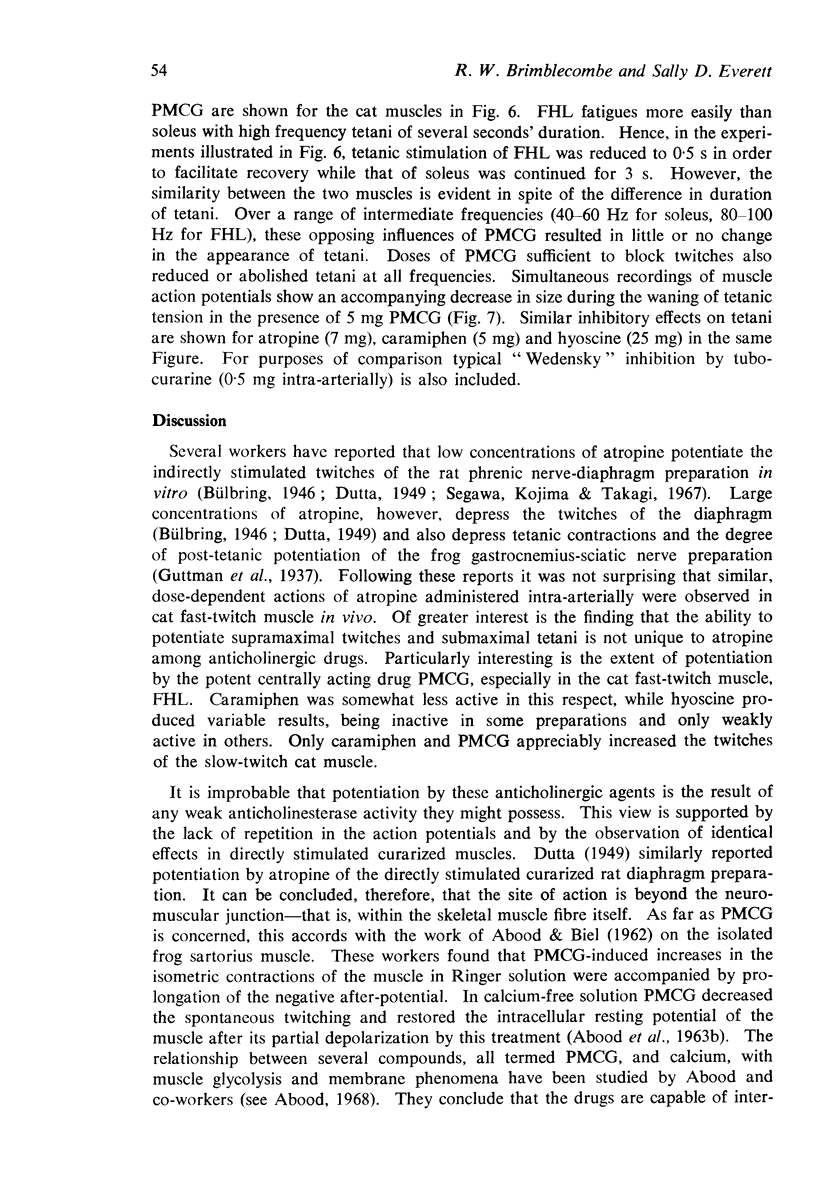
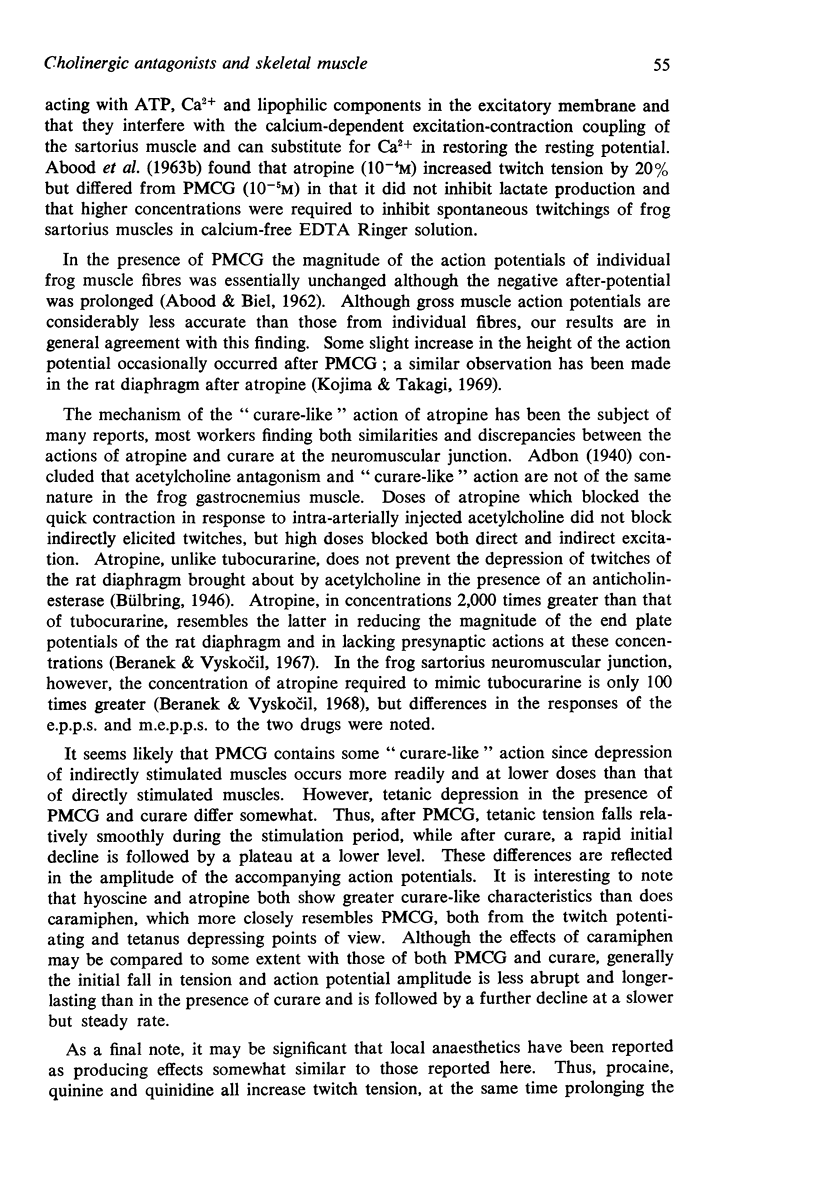

Selected References
These references are in PubMed. This may not be the complete list of references from this article.
- ABOOD L. G., KOYAMA I., KIMIZUKA H. A possible mechanism of action of calcium and some psychotomimetic agents on membranes. Nature. 1963 Jan 26;197:367–368. doi: 10.1038/197367a0. [DOI] [PubMed] [Google Scholar]
- ABOOD L. G., SMITH C. M., KOYAMA I., KOKETSU K. The action of some psychotomimetic agents on the excitatory and biochemical processes of frog sartorius muscle. J Neurochem. 1963 Feb;10:95–111. doi: 10.1111/j.1471-4159.1963.tb11469.x. [DOI] [PubMed] [Google Scholar]
- BULLER A. J., LEWIS D. M. FURTHER OBSERVATIONS ON THE DIFFERENTIATION OF SKELETAL MUSCLES IN THE KITTEN HIND LIMB. J Physiol. 1965 Feb;176:355–370. doi: 10.1113/jphysiol.1965.sp007555. [DOI] [PMC free article] [PubMed] [Google Scholar]
- BULLER A. J., LEWIS D. M. THE RATE OF TENSION DEVELOPMENT IN ISOMETRIC TETANIC CONTRACTIONS OF MAMMALIAN FAST AND SLOW SKELETAL MUSCLE. J Physiol. 1965 Feb;176:337–354. doi: 10.1113/jphysiol.1965.sp007554. [DOI] [PMC free article] [PubMed] [Google Scholar]
- Beránek R., Vyskocil F. The action of tubocurarine and atropine on the normal and denervated rat diaphragm. J Physiol. 1967 Jan;188(1):53–66. doi: 10.1113/jphysiol.1967.sp008123. [DOI] [PMC free article] [PubMed] [Google Scholar]
- Beránek R., Vyskocil F. The effect of atropine on the frog sartorius neuromuscular junction. J Physiol. 1968 Mar;195(2):493–503. doi: 10.1113/jphysiol.1968.sp008470. [DOI] [PMC free article] [PubMed] [Google Scholar]
- Brimblecombe R. W., Everett S. D. Actions of a cholinergic antagonist on mammalian skeletal muscle. Br J Pharmacol. 1969 May;36(1):172P–173P. [PMC free article] [PubMed] [Google Scholar]
- Kojima M., Takagi H. Effects of some anticholinergic drugs on antidromic activity in the rat phrenic nerve-diaphragm preparation. Eur J Pharmacol. 1969 Jan;5(2):161–167. doi: 10.1016/0014-2999(69)90024-7. [DOI] [PubMed] [Google Scholar]
- LAMMERS W., RITCHIE J. M. The action of quinine and quinidine on the contractions of striated muscle. J Physiol. 1955 Aug 29;129(2):412–423. doi: 10.1113/jphysiol.1955.sp005364. [DOI] [PMC free article] [PubMed] [Google Scholar]
- Segawa T., Kojima M., Takagi H. Effects of several anticholinergic drugs on the post-tetanic potentiation in the phrenic nerve-diaphragm preparation of the rat. Jpn J Pharmacol. 1967 Sep;17(3):465–474. doi: 10.1254/jjp.17.465. [DOI] [PubMed] [Google Scholar]


